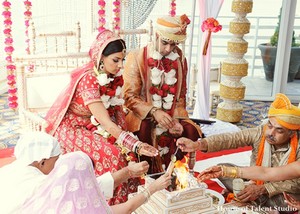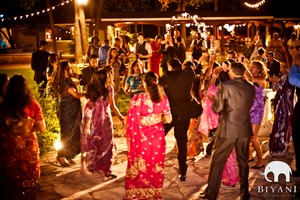Mehndi MadnessTM Blog
 Krysteen
Krysteen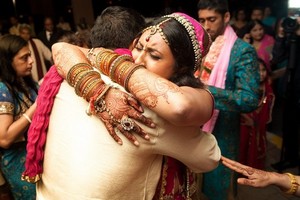 India is BIG country! When talking about Indian weddings we will be speaking generally. Indian weddings are not all the same, the ceremonies and rituals vary depending on the religion of the family and community. There is a lot that goes into an Indian wedding, so much in fact that we had to make this a 3 part post! These posts are separated by pre-wedding, wedding day, and post-wedding celebrations.
India is BIG country! When talking about Indian weddings we will be speaking generally. Indian weddings are not all the same, the ceremonies and rituals vary depending on the religion of the family and community. There is a lot that goes into an Indian wedding, so much in fact that we had to make this a 3 part post! These posts are separated by pre-wedding, wedding day, and post-wedding celebrations.
Pre-Wedding Events – At Mehndi Madness, we enjoy the henna and wedding ceremonies. They give us the opportunity to do large, traditional, intricate design and to be involved in a person's very special time of their life.
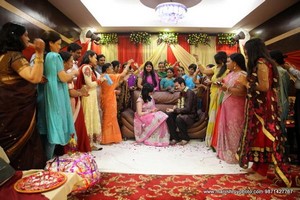 Engagement ceremony - Typically located at the bride's family's house or a banquet hall, the engagement ceremony is one of the most important rituals. This is when the bride and grooms families get to have their first gathering as a joined family. They all exchange sweets, small gifts and wish each other well. Afterwards, the ring ceremony begins which varies depending on religion and subculture but often includes prayer, symbolic gifts to bless the marriage, and exchanging rings. Depending on the time of day, a large lunch or dinner ends this ceremony along with music and dancing.
Engagement ceremony - Typically located at the bride's family's house or a banquet hall, the engagement ceremony is one of the most important rituals. This is when the bride and grooms families get to have their first gathering as a joined family. They all exchange sweets, small gifts and wish each other well. Afterwards, the ring ceremony begins which varies depending on religion and subculture but often includes prayer, symbolic gifts to bless the marriage, and exchanging rings. Depending on the time of day, a large lunch or dinner ends this ceremony along with music and dancing.
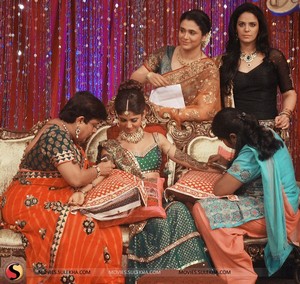 Mehndi Celebration - Another important component of an Indian wedding, the mehndi ceremony is celebrated by the bride's family and friends. This ceremony can take place at the bride's family's home or banquet hall on the eve of the wedding or a couple of days prior. Traditionally, a family member would apply the bride's mehndi, but today it is common for a professional artist to come in and apply the mehndi. The designs are applied to the hands and feet and can go all the way up to the bride's knees and elbows. There are no restrictions on the amount of mehndi, this is simply the bride's preference. Modern bridal mehndi includes the use of glitter, rhinestones, mica gel (white “henna”), and designs on the bride's legs, shoulders and back. The act of receiving mehndi not only adorns the bride, but signifies the bride's transformation into a sexual being. The Kama Sutra includes mehndi as one of the 64 arts of women. Some motifs include peacocks and their feathers, flowers, doli and baraat patterns, and hiding the groom's name in the design. Today, the Mehendi ceremony and Sangeet are on the same day.
Mehndi Celebration - Another important component of an Indian wedding, the mehndi ceremony is celebrated by the bride's family and friends. This ceremony can take place at the bride's family's home or banquet hall on the eve of the wedding or a couple of days prior. Traditionally, a family member would apply the bride's mehndi, but today it is common for a professional artist to come in and apply the mehndi. The designs are applied to the hands and feet and can go all the way up to the bride's knees and elbows. There are no restrictions on the amount of mehndi, this is simply the bride's preference. Modern bridal mehndi includes the use of glitter, rhinestones, mica gel (white “henna”), and designs on the bride's legs, shoulders and back. The act of receiving mehndi not only adorns the bride, but signifies the bride's transformation into a sexual being. The Kama Sutra includes mehndi as one of the 64 arts of women. Some motifs include peacocks and their feathers, flowers, doli and baraat patterns, and hiding the groom's name in the design. Today, the Mehendi ceremony and Sangeet are on the same day.
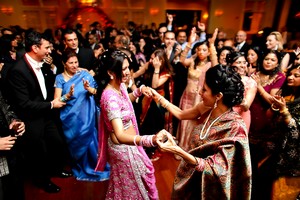 Sangeet party - The Sangeet ceremony is a fun filled ritual also known as Gaun. Ages ago, the sangeet was a 10 day party, but with modern work schedules, all of the fun has been condensed to one night. Traditional wedding songs are sung, instruments play lively music. This celebration is traditionally only for the women of the family, but have been opened up to men and friends as well as family.
Sangeet party - The Sangeet ceremony is a fun filled ritual also known as Gaun. Ages ago, the sangeet was a 10 day party, but with modern work schedules, all of the fun has been condensed to one night. Traditional wedding songs are sung, instruments play lively music. This celebration is traditionally only for the women of the family, but have been opened up to men and friends as well as family.
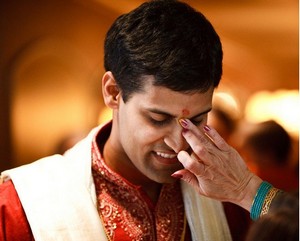 Tilak Ceremony - This ceremony is traditionally for all the men in both the bride and groom's families but is currently more open to men and women today. This ceremony is performed by either the patriarch of the groom's family or a preacher. The person performing the ceremony sings a hymn and he or the brother of the bride places a Tilak on the forehead of the groom. Gifts and sweets are exchanged between the two families. The point of this ceremony is to mark the engagement but ultimately to bond the two families together before the marriage takes place.
Tilak Ceremony - This ceremony is traditionally for all the men in both the bride and groom's families but is currently more open to men and women today. This ceremony is performed by either the patriarch of the groom's family or a preacher. The person performing the ceremony sings a hymn and he or the brother of the bride places a Tilak on the forehead of the groom. Gifts and sweets are exchanged between the two families. The point of this ceremony is to mark the engagement but ultimately to bond the two families together before the marriage takes place.
